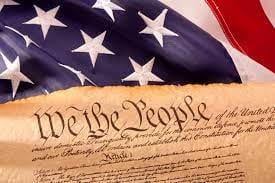Constitution Day: Key Takeaways
When did the birth of our nation begin? When the first Native Americans shifted into the country around fifteen thousand years ago? Or when the American colonists achieved their independence from the British, established through the signing of the Declaration of Independence? Though we could debate for hours, I strongly believe that it occurred with the adoption of the Constitution on September 17, 1787, drafted and signed by delegates like Alexander Hamilton from New York, Benjamin Franklin from Pennsylvania, and James Madison Jr. from Virginia at the Constitutional Convention in Philadelphia.
These framers of the Constitution agreed to demands like each state would be equally represented in the Senate, with two representatives, while representation in the House of Representatives would be based on population; these resolutions were largely based on compromises made between the New Jersey Plan and Virginia Plan, also known as the Great Compromise. The Constitution also formed the executive and judicial branch, consequently setting up the system of checks and balances. Under this system, all the three branches would have an equal distribution of power to ensure that no one branch would become more powerful than the others. The legislative branch would create the laws, the executive would enforce laws, and the judicial branch would interpret laws.
Citizenship requirements and the process to amend the Constitution were also discussed at the convention. The President would have to be native-born in order to hold office, and Representatives would have to be citizens for seven years and Senators for nine years. As for making amendments to the Constitution, nine of the thirteen states would have to vote to ratify an amendment before it could become official.
This document forms the foundation of our country: it established the framework of our government and the freedoms and rights that “We the People” exercise today. Without it, there would be no such thing as the fundamental rights that we enjoy continuously like freedom of speech, religion, assembly, press, and the right to petition the government.
Constitution Day’s first creation is largely attributed to the New York City news tycoon William Randolph Hearst. As a well-known politician and newspaper publisher, Hearst had several political connections; and so, Congress set aside the third Sunday in May as “I am an American Day” in 1940. In 1944, Hearst also sponsored a sixteen minute film (i.e., “I Am an American”), which quickly gained support and popularity in American theaters as it became a top news story. President Harry Truman, the president at the time, designated this date in honor of the American people, with special regards to those who had recently become citizens. By 1950, the governors of each of the 48 states within the continental US publicly recognized and announced proclamations in agreement with the holiday.
Essentially, Constitution Day commemorates this milestone in our history, although it’s somewhat surprising to see that it took nearly two centuries from the ratification of the Constitution to the birth of the holiday. Our nation should pause for a moment and reflect on how a historic document has sustained its way through today, specifically focusing on its impacts on today’s life.

Enjoy Reading This Article?
Here are some more articles you might like to read next: